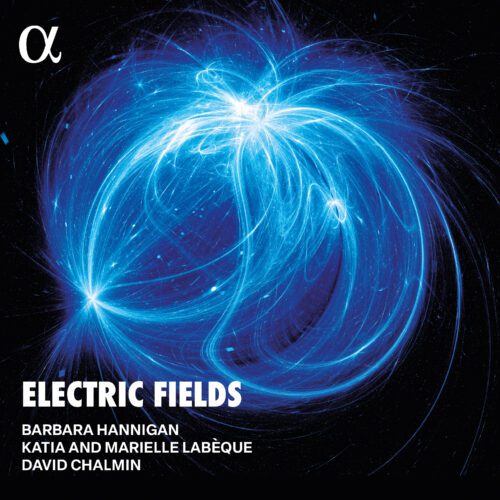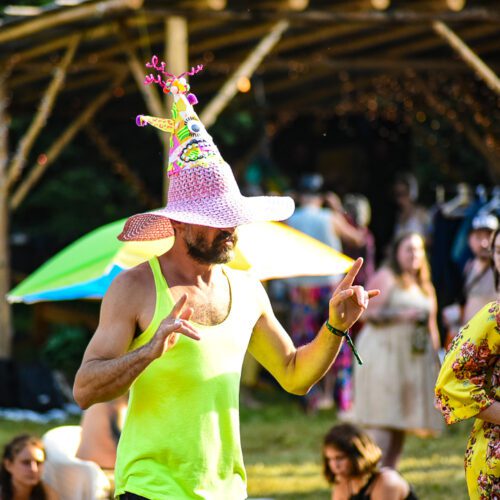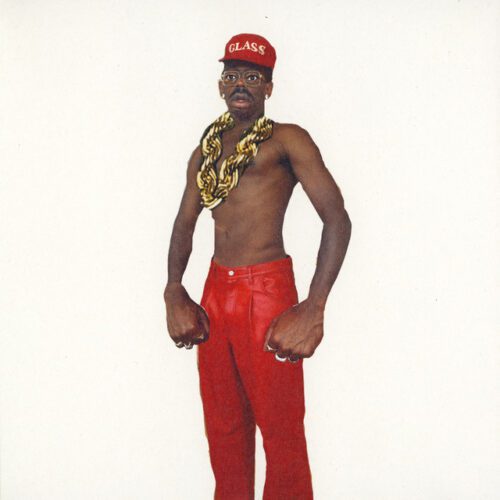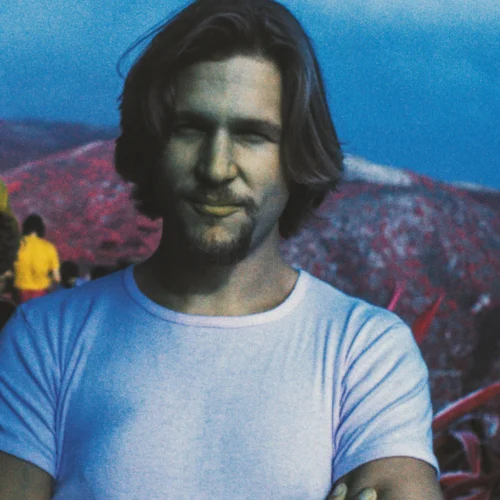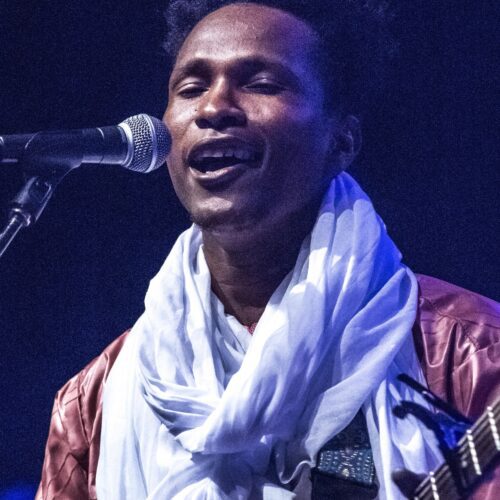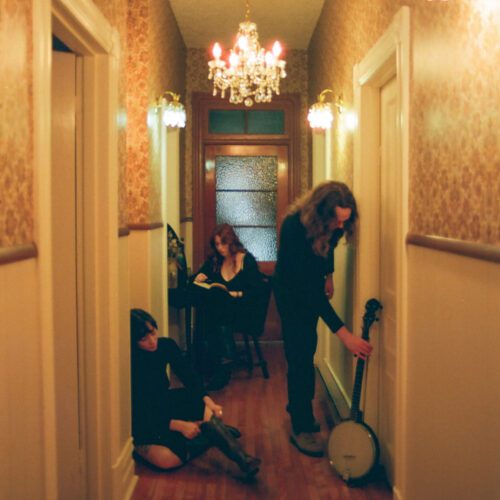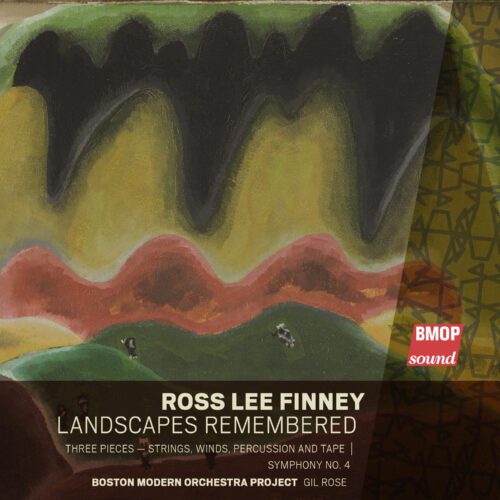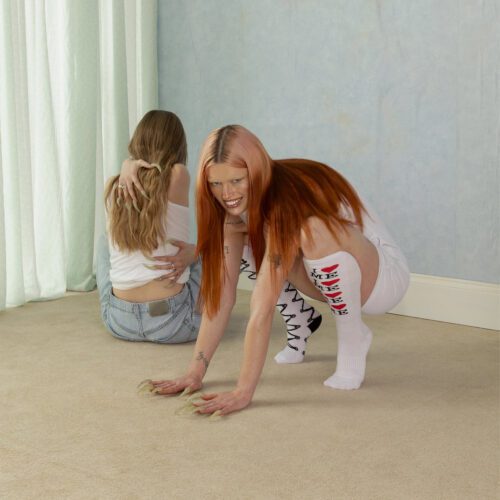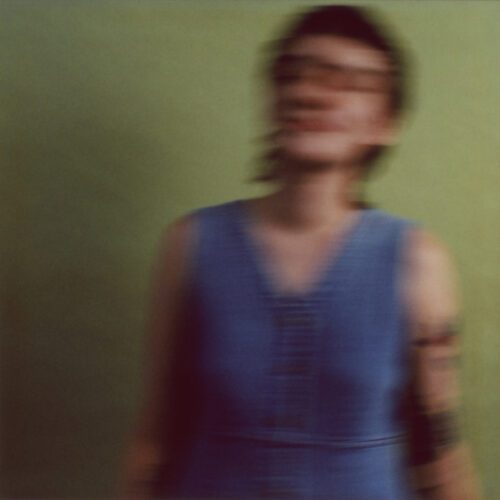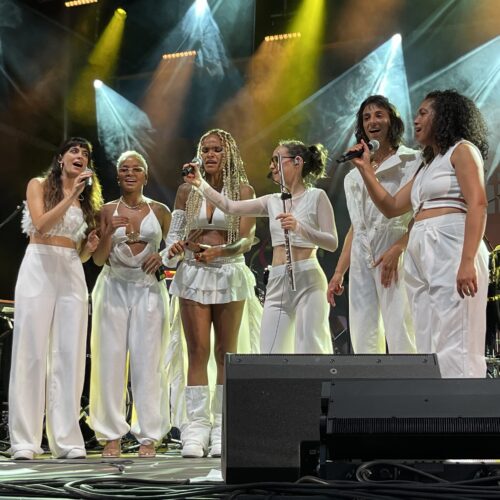Opening Photo By: Frédérique Ménard-Aubin
For a second night, the Société des Arts Technologiques opened its doors to Mutek 2023 for the Nocturne 2 event, showcasing a nested palette of electronic artists. With its two open performance spaces, the performances followed one another without interruption, so that it was sometimes necessary to make agonizing choices between one or other of the rooms.
Twin Rising (VJ Isotone)
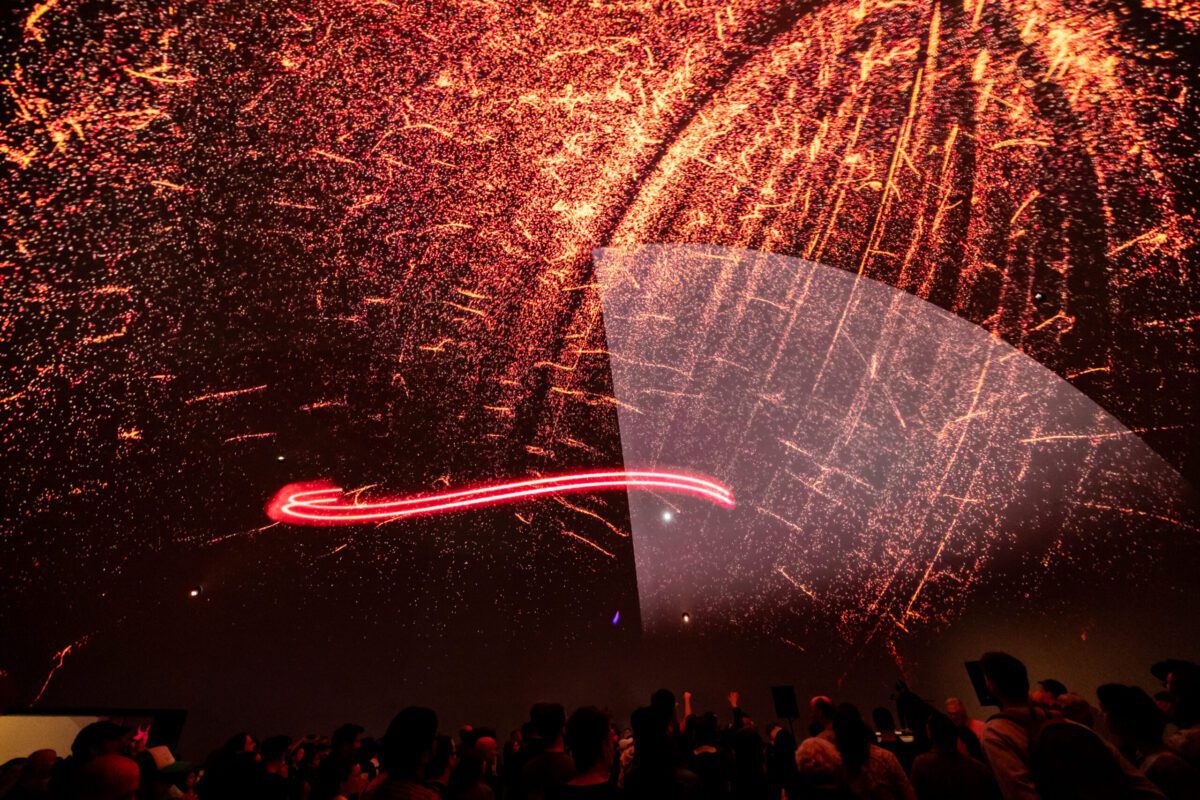
// Frédérique Ménard-Aubin
Twin Rising’s mask, adorned with chains, revealed a soft, high-pitched voice, whose vulnerability contrasted with the often rough tones of the lower register. Indeed, despite a consistently harmonic framework, the undulating low frequencies marked a slow, ponderous tempo. In the heaviest moments, it was as if we were witnessing a dubstep performance as defined in the 2000s. An attentive ear could also detect deliberately asynchronous synthetic “snare drums”, creating a highly effective effect of anticipation. A balance between catchy pulsation and rhythmic deconstruction kept the audience on its toes, as did the heterogeneous visuals projected by VJ Isotone onto the satospheric dome. Between aquatic surges and granular geometry, the multicolored palette was the only thread to hold on to. In any case, these shapes went very well with Twin Rising’s music, creating a vaguely melancholy atmosphere. An excellent way to start the evening.
Efe Ce Ele
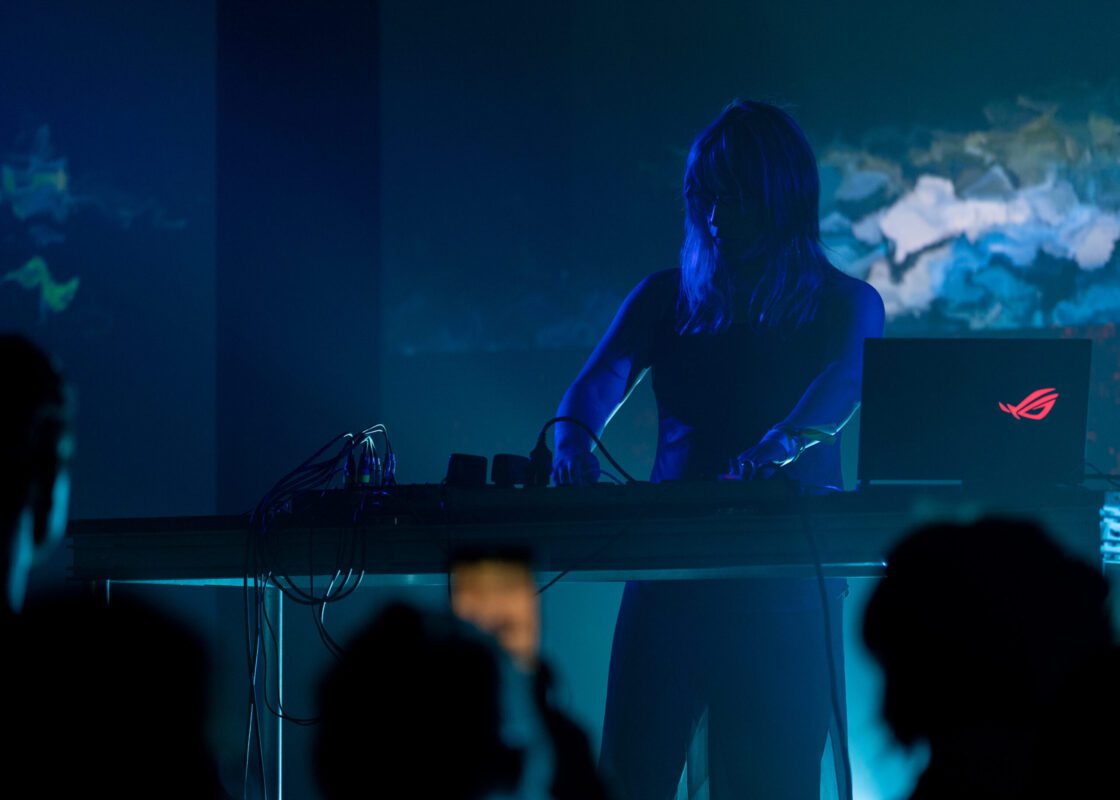
// Nina-Gibelin Souchon
Descending to the first floor, the change in atmosphere was immediately apparent. For Efe Ce Ele’s performance, the tone was decidedly darker: insistent pulsation, strobe lighting, psychedelic visuals and explicit political messages. There were echoes of techno and industrial music in this soundtrack to an anxious age. Melodically, the music evolved mainly in the low register, with occasional breakthroughs of piano, percussion and sampled vocals. More often than not, we were bathed in a complex drone of slowly modulating voices. Transitions were often articulated by superimposing sections, momentarily creating a very dense, dissonant passage.
Nadia Struiwigh
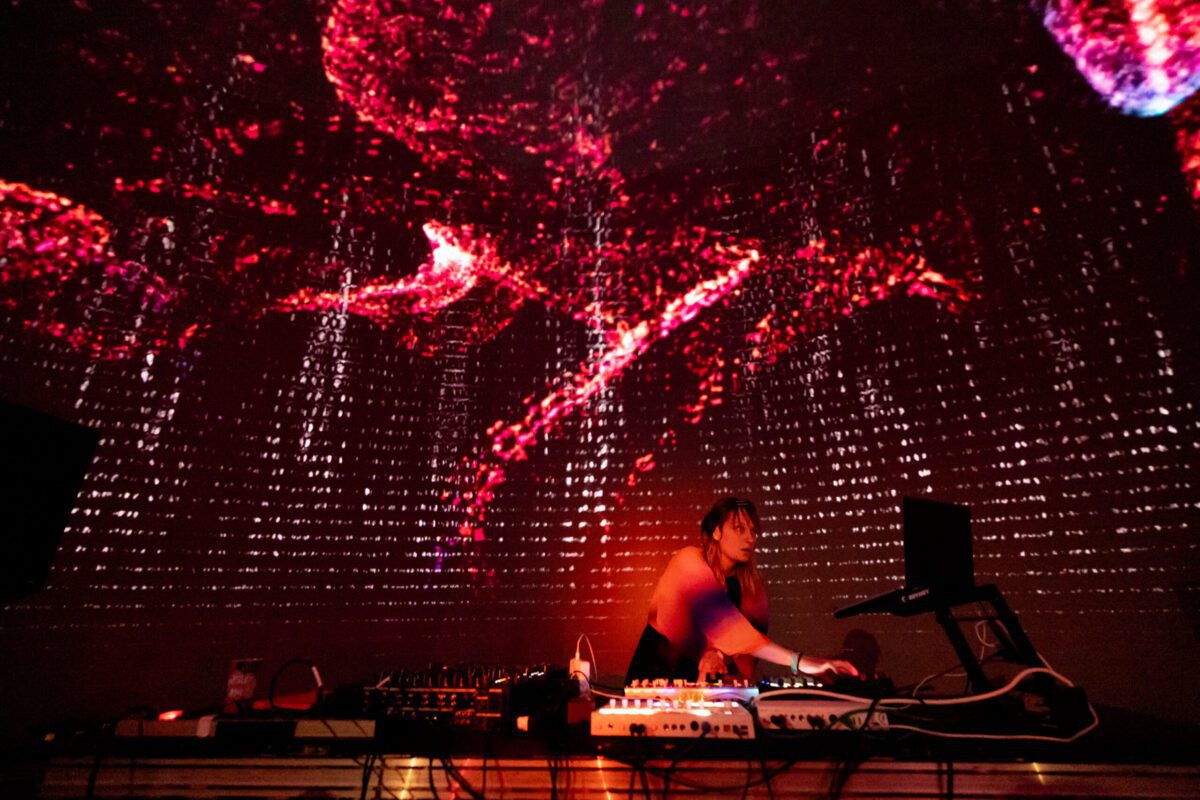
// Frédérique Ménard-Aubin
Back in a crowded Satosphere, the atmosphere created by Nadia Struiwigh was the first of the evening to be reminiscent of a rave. The experience was necessarily more physical than the others, with the Dutch artist’s music operating with consistently catchy 4/4 rhythms. Here and there, syncopations added slight echoes of drum’n’bass and breakbeat. Harmonically, held or fading chords followed each other in a simple progression. These were coupled with short, repeated melodic cells, creating an ever-present contrast of rhythmic density. Textures added to this catchy base kept the sound interesting, while the body was easily carried along by the continuous backbeats. On the visual side, artists BunBun and Alex Vlair proposed a highly successful composition. Spiral patterns, concentric circles and circular mosaics were perfectly in tune with the SAT dome.
Paraadiso
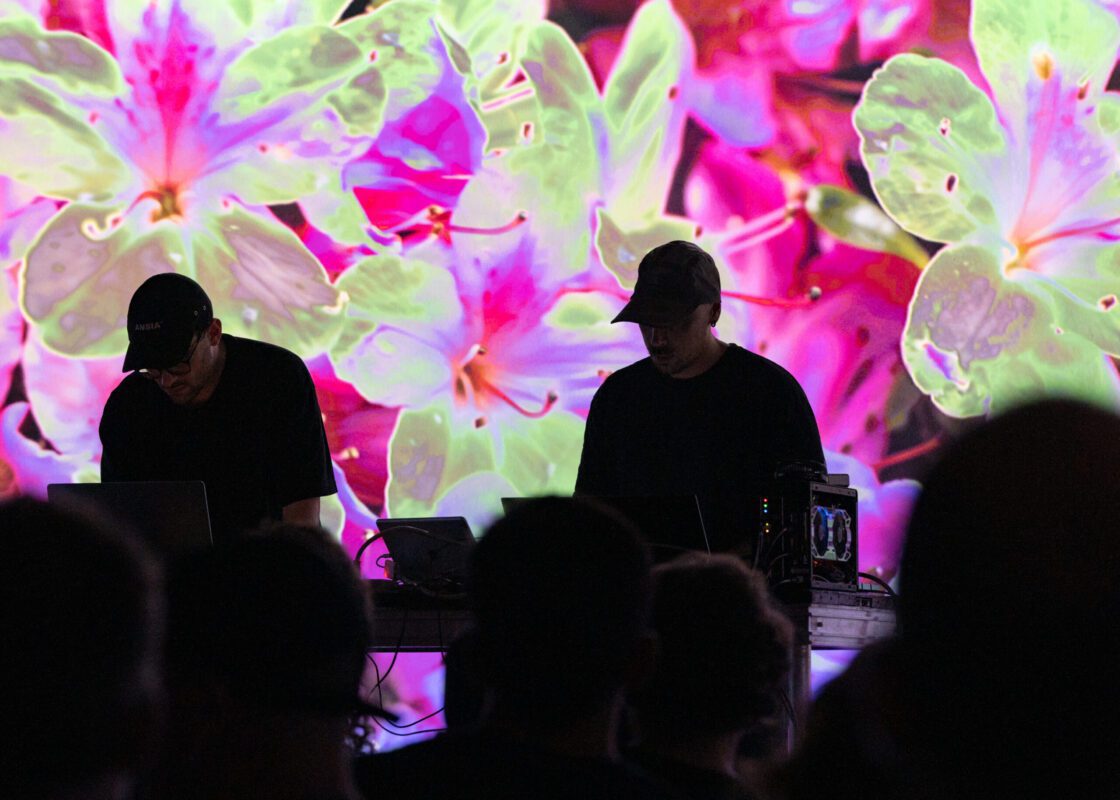
// Nina-Gibelin Souchon
Composed of artists TSVI and Seven Orbits, the Paraadiso duo delivered a much less conventional sound. The atmosphere was sometimes ethereal and consonant, and sometimes suddenly chaotic and noisy. The common denominator here was well-calculated rhythms to avoid the predictable. Strong beats were often avoided, accentuating syncopation instead. At other times, polyrhythms created highly effective phase-shifting effects. Irregular subdivisions in turn destabilized the construction of a rhythm. Overall, the duo’s sounds were abstract, closer to digital art than dance music. This experimentation was also reflected in the projections, composed of microscopic images of the natural world, which were highly processed to the point of becoming unrecognizable textures. With a rich palette of sounds, the Paraadiso duo offered a skilful performance of “music not for dancing.”
Amselysen/Racine
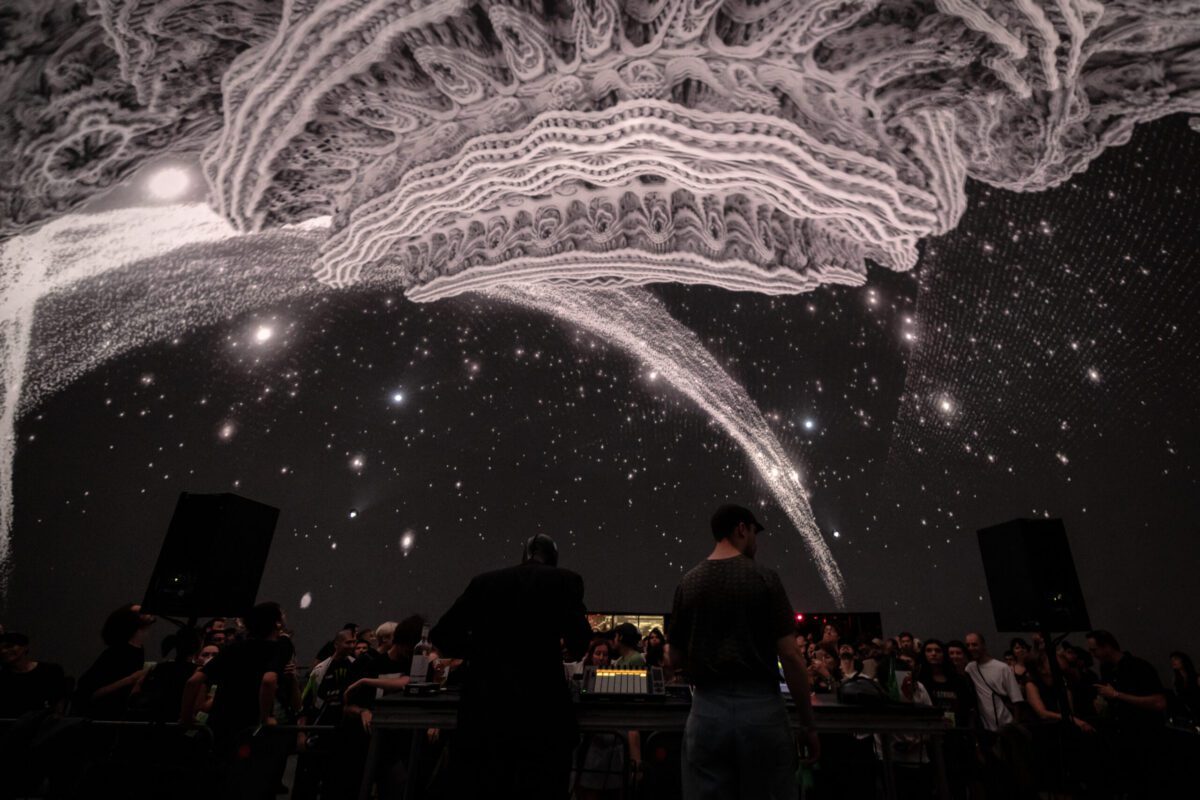
// Frédérique Ménard-Aubin
The Amselysen/Racine duo presented austere music, where everything was rhythm and timbre. No melody, no harmonic cues. What’s more, the pulse was drowned out by fast syncopations or fast bass drum mats. Resolutely industrial, the sound was reminiscent of Autechre in its less consonant moments. In keeping with the gray but no less exhilarating music, the visuals projected onto the dome by Diagraf were all black and white. Origami stalagmites layered with stardust were transformed into sooty nebulae. Amselysen and Racine skilfully captivated their audience despite the difficult, rigid music.
X/O
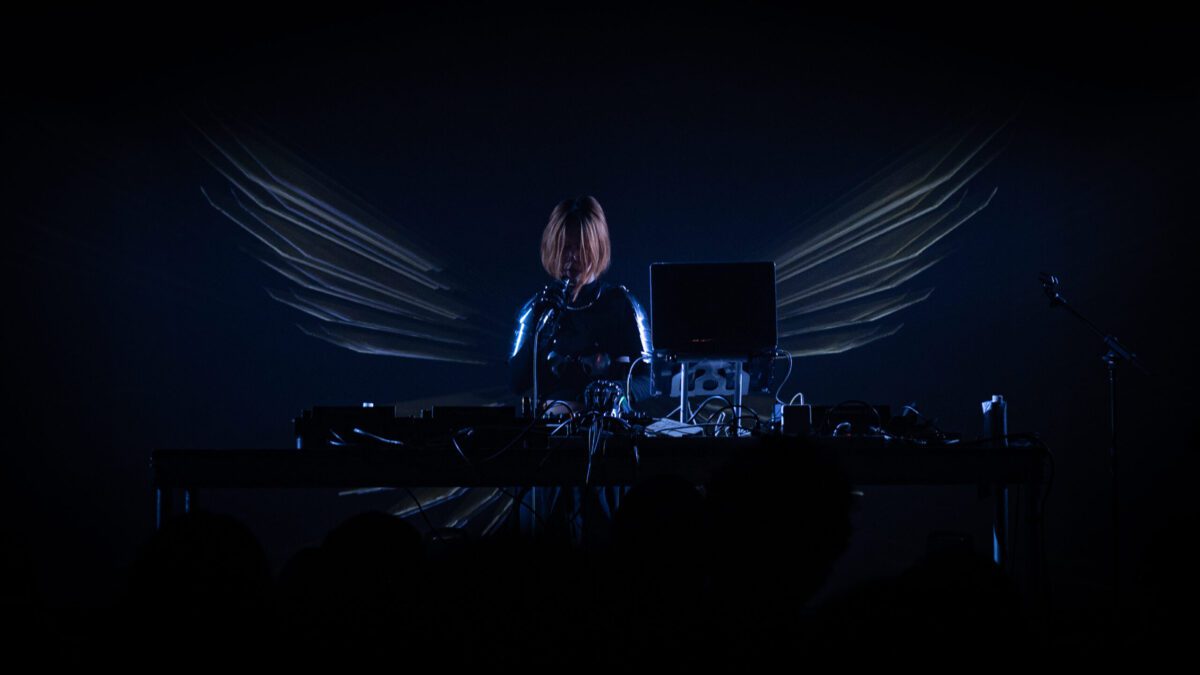
// Nina-Gibelin Souchon
Already past midnight, x/o took to the stage to present tracks from their excellent album Chaos Butterfly. This heavy music, full of contrasts thanks to dreamy vocals, reinvested many familiar musical landmarks. From IDM to metal, from dream pop to breakbeat, the Vancouver artist gave a convincing performance. Unfortunately, the vocal performance was a little too timid, and did not stand out in the sound balance. Technical problem or lack of confidence? Whatever the case, the vocals weren’t treated in a way that did full justice to the compositions, a drawback that was somewhat corrected towards the end. Nevertheless, x/o captivated their audience with ease, creating a dark atmosphere enhanced by bluish strobe lighting and hypnotic projections. One could appreciate the almost shoegaze noise flights illustrated by Japanese-drawn characters. All in all, x/o provided a moment of catharsis as heavy as it was soothing, with a well-controlled rise in intensity from one room to the next.
Kyoka
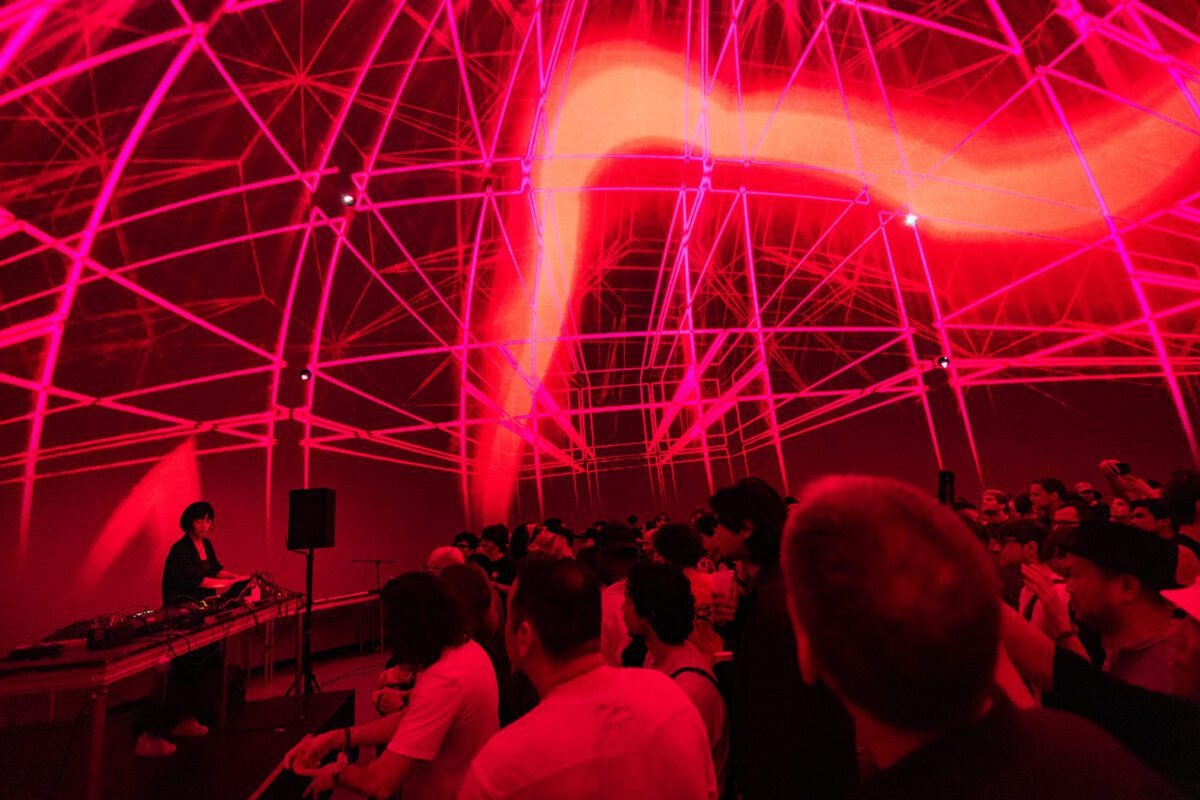
// Frédérique Ménard-Aubin
From the outset, Kyoka’s music was almost entirely inharmonic, focusing on the fullness of its sound samples and the insistence of its rhythms. The beginning of the performance was colored only by the cubist projections of BunBun and Alex Vlair. Yet, in a sudden moment of weightlessness, every trace of rhythm faded away, giving way to a long, atmospheric, harmonic passage. It was a real breath of fresh air, in an evening where the continuous pulse was king. Rhythmic, but more nuanced music with new melodic elements then emerged from this lull, bringing a sequence of euphoric variations to a close.
Animistic Beliefs
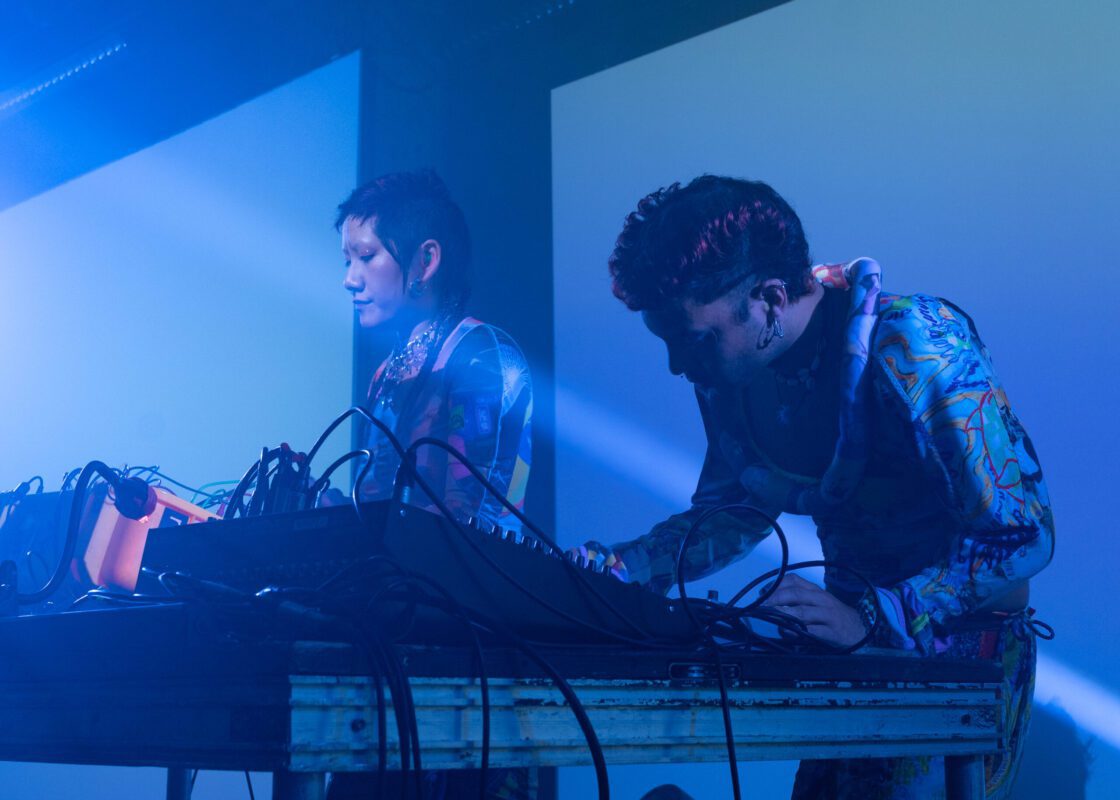
// Nina-Gibelin Souchon
It didn’t matter to Animistic Beliefs that their appearance on stage was scheduled for the early hours. The duo truly transformed the SAT into a nocturnal party, intoxicating the audience with a relentless pulse and psychedelic sounds stacked one on top of the other. Their experimental music is generated in real-time by modular synthesizer work that doesn’t pull any punches. The sound was dense, the sound was loud, and the high-pitched rough whistles assaulted the senses as much as the thundering low frequencies. The duo’s music was peppered with intriguing sonorities, from samples to vocal outbursts declaimed like a punk singer screaming into a megaphone. Animistic Beliefs are said to incorporate Southeast Asian influences into their sound, sampling Vietnamese poetry and totobuang, the gong chimes of Indonesia’s Moluccan Islands. However, this is not the kind of nuance that could have been perceived on the spot, since the duo’s show is such a smash hit. A discovery that makes you want to go and listen to their album MERDEKA (independence in Indonesian).
Eƨƨe Ran
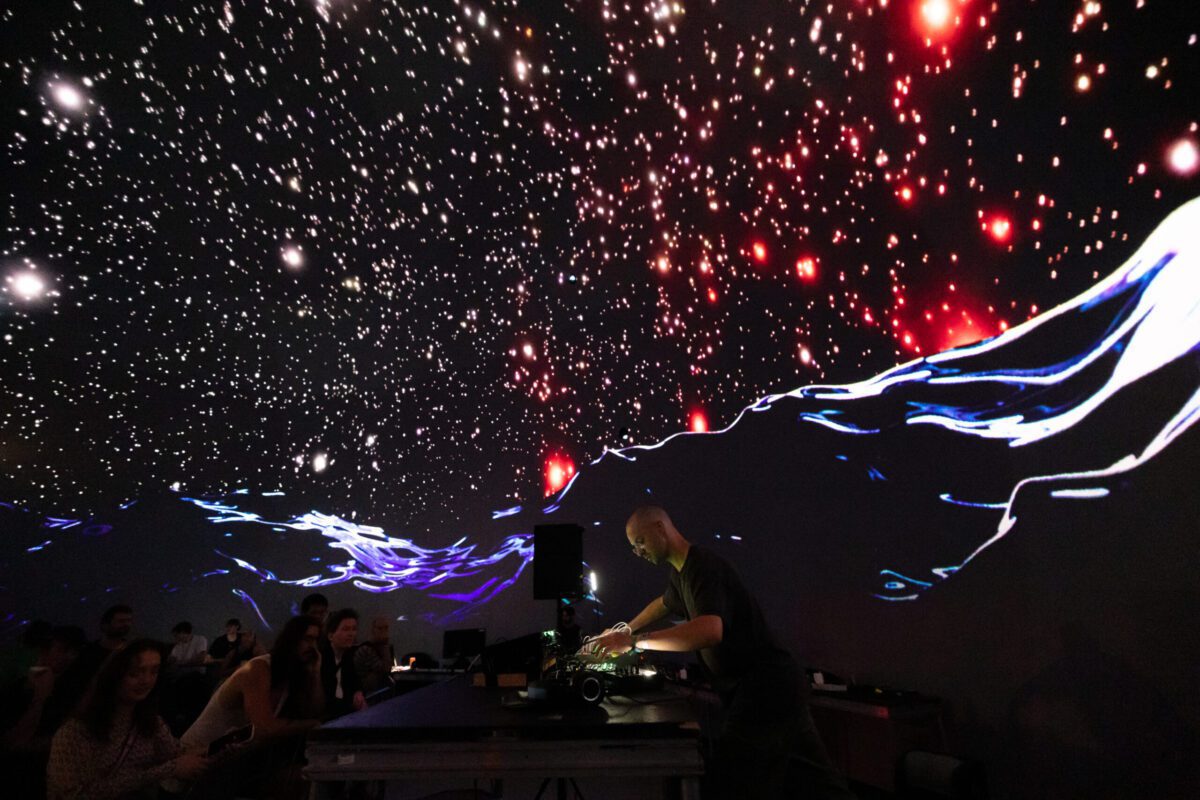
// Frédérique Ménard-Aubin
Here’s another case where tonality was in short supply. Alternating a frantic pulse with powerful syncopated rhythms, Eƨƨe Ran had the thankless task of closing a stimulating evening. The artist’s formula might have remained a little drab were it not for the numerous misbehaviors. The Montrealer didn’t hesitate to divert his rhythmic carpet by improvising a noisy passage evoking unintelligible vocoder sounds, or by momentarily stretching or compressing the tempo. It was all about working with texture. Otherwise, the music shared that industrial coldness common to many of the evening’s artists, in which white noise is more the norm than musical note. Perhaps a little randomly, pointillist images of molecular structures and spatial nebulae were interspersed with rocky desert landscapes, all creating an atmosphere of almost nihilistic abandon to dance and decibels too many. The evening ended with a rallentando and a decrescendo into nothingness.



